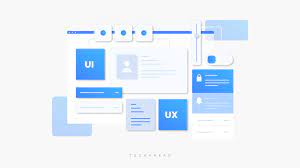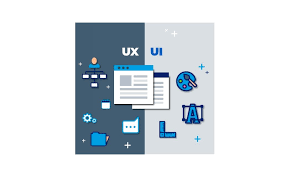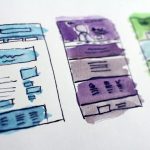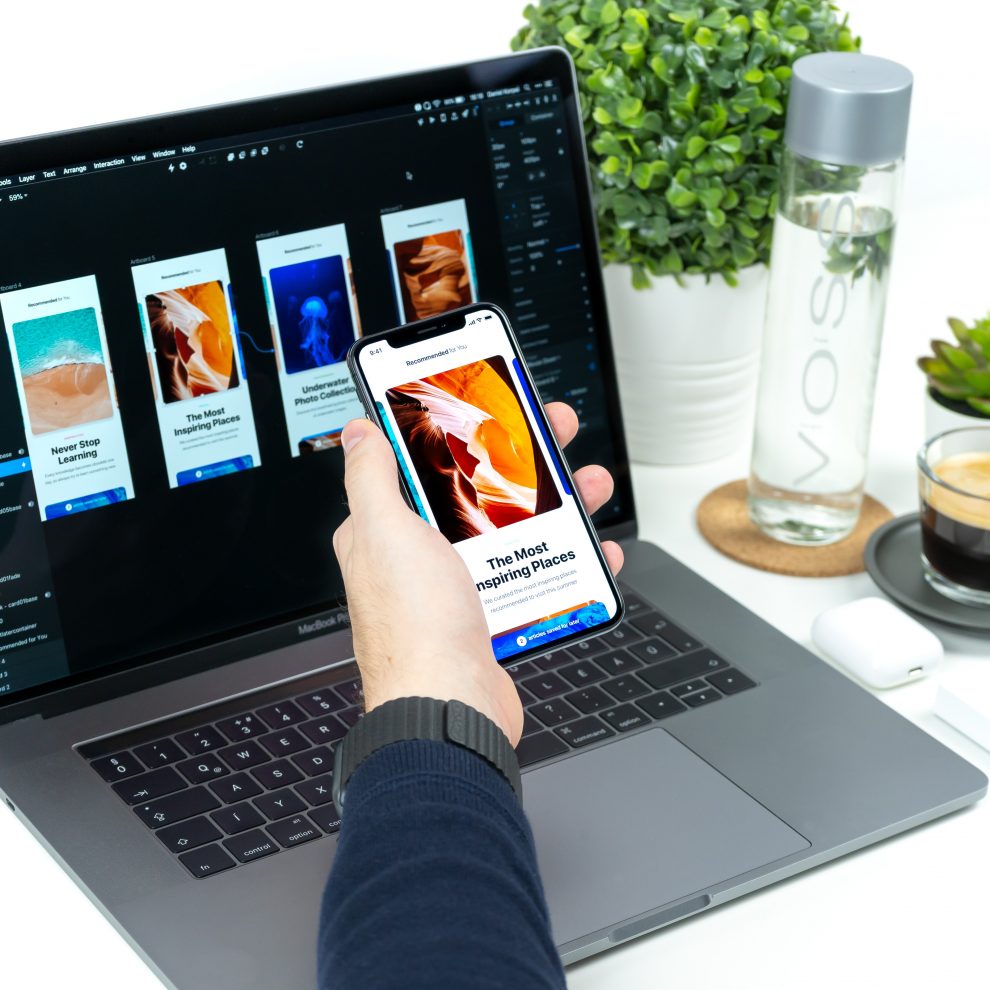The role of UX Design plays a pivotal role in the triumphant development of mobile applications in the USA. Its active involvement in the process ensures that apps are user-centric and highly functional. UX Design, through its user research and testing, creates interfaces tailored to the specific needs and preferences of the target audience.
By focusing on usability, navigation, and aesthetics, the role of UX Design enhances user satisfaction and engagement. It fosters positive interactions by making apps intuitive and easy to navigate, ultimately reducing user frustration and abandonment rates.
Moreover, in the competitive landscape of the USA’s app market, a well-crafted user experience becomes a distinguishing factor. Apps that provide seamless, enjoyable interactions are more likely to gain user loyalty and receive positive reviews, bolstering their success.
UX Design also contributes to app sustainability. By continually refining and optimizing the user experience based on user feedback and changing technological trends, apps remain relevant and competitive in the ever-evolving market.
In conclusion, UX Design is not merely a component but a driving force behind successful app development in the USA. It ensures that apps meet user expectations, stand out in the market, and evolve to maintain their relevance.
What is User Experience Design?

User Experience Design (UX Design) is a comprehensive process aimed at refining and elevating the overall experience users have when engaging with a product, whether it’s a website, mobile application, or software. This multifaceted discipline draws from design principles, psychology, and extensive user research to establish a seamless and gratifying user journey.
In UX Design, designers proactively delve into comprehending users’ requisites, behaviours, and preferences through methodologies such as user research, surveys, and usability testing. This research-driven approach serves as the foundation for developing intuitive and user-centric interfaces that harmonize with users’ anticipations.
The role of the UX Design process involves the development of user personas, delineation of user journeys, crafting wireframes, and prototyping to delineate and streamline the user’s navigation and interactions within the product. Furthermore, it delves into information architecture and content structuring to ensure that users can effortlessly locate the information they seek.
Additionally, UX Design also gives weight to the aesthetic and visual aspects of a product, ensuring that it not only operates effectively but also exudes an appealing and coherent visual identity that aligns with the brand’s image.
The ultimate objective of UX Design is to optimize the user’s interaction with the product, fostering efficiency, enjoyment, and memorability. In the realm of product development, a positive user experience serves as a linchpin, often resulting in heightened user satisfaction, prolonged user engagement, and unwavering brand loyalty. Thus, UX Design emerges as an indispensable catalyst in crafting successful and user-centric digital products.
UX Design Promotes User Engagement

UX Design actively encourages and cultivates user engagement within digital products. It achieves this by comprehensively analyzing user behaviours and preferences. Through research and testing, designers gain insights to create intuitive interfaces. The process encompasses user personas, journeys, wireframes, and prototypes to optimize navigation and interactions.
Furthermore, UX Design ensures that information architecture and content organization are user-friendly. This guarantees that users effortlessly find what they seek. Additionally, it places significance on visual aesthetics, aligning them with brand identity, thereby enhancing the overall experience.
In essence, UX Design functions as a driving force in fostering positive user interactions. It focuses on efficiency and enjoyment in user experiences. By aligning product design with user expectations, it maximizes user satisfaction and engagement.
This proactive approach to user experience plays a pivotal role in successful product development. It is an essential component that contributes to increased user retention and brand loyalty. Ultimately, UX Design’s emphasis on user engagement serves as a cornerstone for digital product success.
UX Design Cultivates Brand Loyalty
-0-
UX Design is a potent force in cultivating brand loyalty. It actively engages users and nurtures a strong and lasting connection between them and the brand. Through a user-centric approach, UX Design ensures that every interaction with a product or service is meaningful and satisfying.
By thoroughly understanding user needs and behaviours, UX designers craft experiences that resonate with the target audience. This deep understanding is derived from research, surveys, and usability testing, allowing designers to make informed decisions that align with user expectations.
UX Design encompasses various elements, including user personas, user journeys, wireframes, and prototypes, all meticulously designed to map out the user’s path and optimize their interactions. It also emphasizes the importance of information architecture and content organization, making it effortless for users to find the information they seek.
Furthermore, the aesthetic aspects of design are carefully considered to ensure consistency with the brand’s identity, enhancing the overall experience. A visually appealing and user-friendly interface contributes significantly to the cultivation of brand loyalty.
In conclusion, UX Design is instrumental in building brand loyalty by consistently delivering exceptional user experiences. A positive user experience fosters a sense of trust, satisfaction, and connection with the brand, ultimately leading to increased customer retention and advocacy.
UX Designers Consider the Who, Why, What, and How of Product Use
UX Designers take a comprehensive approach by considering the key aspects of “Who, Why, What, and How” when designing products. This holistic perspective ensures that the user experience is well-rounded and user-centric.
Who :
UX Designers start by identifying the target audience or users of the product. They delve into understanding their demographics, preferences, and needs. By creating user personas, designers can empathize with the users and tailor the product to their specific requirements.
Why :
The designers then focus on the motivations and goals of users. Why are users engaging with the product? What problem or need does the product address? Understanding these motivations helps in creating features and interactions that align with user objectives.
What :
UX Designers carefully analyze what the product offers. This involves defining the product’s core functionality and content. Clarity in what the product delivers ensures that users can easily grasp its value and purpose.
How :
Finally, UX Designers determine how users will interact with the product. They consider the user journey, navigation, and usability aspects. Creating wireframes and prototypes helps in visualizing and optimizing the user flow.
By actively addressing these four dimensions, the role of UX Designers craft experiences that resonate with users, meet their needs and result in intuitive, enjoyable, and effective interactions. This user-focused approach is pivotal in creating successful and engaging digital products.
How to pursue a career as a UX designer?

Pursuing a career as a UX (User Experience) designer involves a deliberate and systematic approach to acquiring the necessary skills and experience. Here is a step-by-step guide to help you embark on this rewarding journey:
Educational Foundation :
Begin with a relevant bachelor’s degree, such as design, psychology, computer science, or a related field. While not mandatory, formal education can provide a strong foundation.
Learn Fundamentals :
Understand core UX principles, including user research, wireframing, prototyping, and usability testing. Numerous online courses and resources are available to self-educate.
Build a Portfolio :
Develop a portfolio showcasing your UX projects. Include detailed case studies that explain your design process, problem-solving abilities, and project outcomes.
Practice User Research :
Master user research techniques like surveys, interviews, and usability testing to comprehend user needs and behaviours.
Tool Proficiency :
Become proficient in UX design tools like Figma, Sketch, Adobe XD, or others for creating wireframes, prototypes, and designs.
Stay Informed :
Stay updated on industry trends, emerging technologies, and best practices through books, blogs, conferences, and online communities.
Networking :
Connect with UX professionals through networking events, conferences, and platforms like LinkedIn to gain insights and job opportunities.
Internships or Entry-Level Roles :
Start your career with internships or entry-level UX positions to gain hands-on experience.
Continual Learning :
UX design is ever-evolving; keep learning to adapt to new technologies and methodologies.
Certifications :
Consider pursuing UX design certifications to enhance your credibility.
Develop Soft Skills :
Hone soft skills like communication, empathy, and problem-solving, are vital for effective collaboration and understanding user needs.
Seek Feedback :
Be open to feedback to improve and refine your skills.
Becoming a UX designer is a dynamic journey that requires dedication and continuous improvement. Persistence, a strong portfolio, and a commitment to understanding and improving user experiences are key to success in this field.
FAQ’S
Q1: What is the role of User Experience (UX) Design in app development?
A1: UX Design plays a critical role in app development by ensuring that the app provides an intuitive, user-friendly, and enjoyable experience for its users.
Q2: Why is UX Design important in the context of successful USA app development?
A2: UX Design is vital because it helps in creating apps that resonate with the diverse preferences and needs of the USA’s user base, resulting in higher user satisfaction and engagement.
Q3: How does UX Design contribute to user retention in app development?
A3: UX Design focuses on creating positive interactions and experiences, which leads to increased user satisfaction and loyalty, ultimately boosting user retention.
Q4: What are some key components of UX Design in app development?
A4: Key components include user research, usability testing, information architecture, wireframing, prototyping, and ensuring visual aesthetics align with the brand’s identity.
Q5: Can UX Design impact the success of an app in a competitive market like the USA?
A5: Yes, UX Design can be a differentiating factor in a crowded app market. Apps that offer exceptional user experiences are more likely to gain a competitive edge.

















